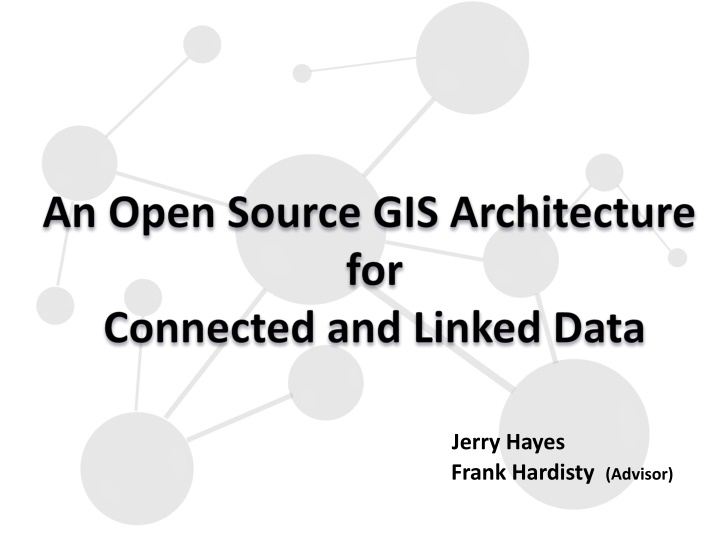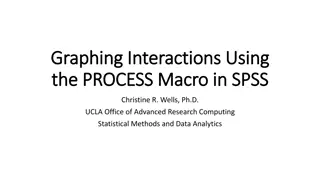
Optimizing GIS Data Storage with Graph Databases
Explore the advantages of using graph databases for GIS data storage over traditional relational databases. Learn how graph databases improve performance and scalability, making it easier to visualize and work with connected data in GIS applications.
Uploaded on | 0 Views
Download Presentation

Please find below an Image/Link to download the presentation.
The content on the website is provided AS IS for your information and personal use only. It may not be sold, licensed, or shared on other websites without obtaining consent from the author. If you encounter any issues during the download, it is possible that the publisher has removed the file from their server.
You are allowed to download the files provided on this website for personal or commercial use, subject to the condition that they are used lawfully. All files are the property of their respective owners.
The content on the website is provided AS IS for your information and personal use only. It may not be sold, licensed, or shared on other websites without obtaining consent from the author.
E N D
Presentation Transcript
Jerry Hayes Frank Hardisty (Advisor)
Connected Data in GIS Today Many use cases in GIS Creates logical model to represent topology. Storage of logical model is not optimal. Problem: Relational database abstraction impedes performance and scalability.
Linked Data in GIS Today Links described by semantic relationships. Semantics enable data discovery. Early stages of adoption in GIS. Problem: Vast potential of the Semantic Web is unrealized in GIS!
How GIS Stores Connected Data Uses relational database tables Having trouble visualizing the network ? so do machines! Abstraction introduces unnecessary overhead. Bad for large datasets!
Graph Databases for Connected Data Stores connected data in its native format. Much easier to visualize network machines are happier too! Removes unnecessary overhead. Good for large datasets!
Database Performance Comparisons Performance comparisons are difficult. how connected is the connected data? Preprocessing data helps mitigate issues. ESRI s preprocessed logical network model. In general i) RDBMS are optimized for aggregation queries ii) Graph databases are optimized for traversing.
Graph Database Characteristics Two basic properties define graph databases. Native Graph Processing Native Graph Storage
Linked Data the Next Frontier Connects data to data on the Web Uses Resource Descriptive Framework (RDF). Creating quality linked data is challenging! Only useful in sufficient quality and quantity.
Accessing Linked Data Many RDF datasets are now available LinkedGeoData for GIS applications. Data quality, availability and stability concerns. Tools are available for accessing RDF models.
Open Source System Architecture Server side is stateless. PostGIS used for .. Storing physical model. Data visualization. Neo4j used for Storing logical model Graph traversals Implemented in the IBM Cloud
Servlet Architecture Provides RESTful API. Enables spatial analytics Enables data discovery. Integrates physical and logical model processing. Implemented in the IBM Cloud















